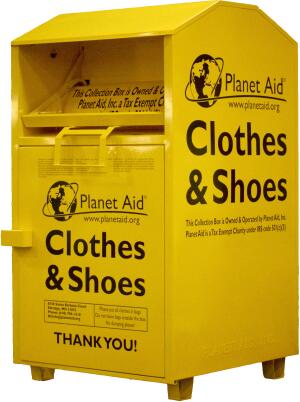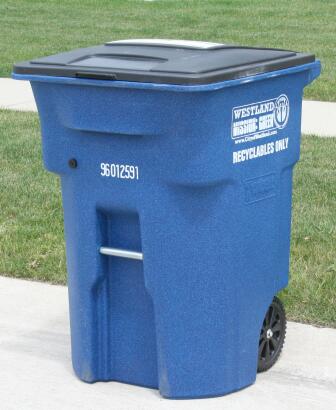Cities around the country face new challenges in keeping their recycling operations afloat, according to a recent report in the Washington Post. Instead of being revenue neutral (or yielding a profit), recycling operations are now draining municipal tax dollars.
Why? Part of the problem is related to the global economy and a drop in price for American recyclables. However, as the Post's Aaron Davis also points out, "Many of the problems facing the industry can be traced to the curbside blue bin."
The Advent of Big Blue
Before the appearance of the now ubiquitous blue bin, municipal curbside recycling programs required that households sort through recyclable items and place each type (glass, paper, metal, etc.) in different containers at home. These containers (generally three or more) would be carried to the curbside each week.
At-home sorting allowed cities to easily collect and sell each "stream" of materials in bulk to manufacturers, who would make them into new products. However, at-home sorting required time and effort, and many households found it too inconvenient and messy, which resulted in low recycling volumes.
Today, glass, paper, cardboard, and some plastics all go into one big blue bin at home (batteries, electronics, textiles are the exception; you should check with your local sanitation department for details on what they accept). The public now enjoys greater convenience because the problem of sorting was shifted from the home to new processing plants called "material recovery facilities." These high-tech facilities use all types of gadgets—from magnets to cyclone separators—to sort the incoming amalgam of materials collected at the curbside.
When the blue bins were first introduced in recycling programs in the 1990s, households responded positively and recycling volumes increased. However, materials that are not recyclable were and are also being put in the bins, which over time has been imposing increasing costs on municipalities as cities have to remove and dispose of junk and other materials that they are not set up to handle. What started out as a good idea, has thus become a burgeoning problem in its own right. The situation has recently led some industry leaders to question the efficacy of such "single-stream recycling" a la the blue bin.
Think Yellow
 Recycling is essential to resource conservation, which helps to halt the spread of landfills and fight global warming. It's a cause that we can all rally around. However, in those brief unguarded moments when we must choose whether to toss something that we no longer want in the trash or not, convenience too often trumps environmental considerations, especially when we must go far out of our way to do the right thing.
Recycling is essential to resource conservation, which helps to halt the spread of landfills and fight global warming. It's a cause that we can all rally around. However, in those brief unguarded moments when we must choose whether to toss something that we no longer want in the trash or not, convenience too often trumps environmental considerations, especially when we must go far out of our way to do the right thing.
At Planet Aid, we understand how important convenience is to consumers, and we strive to make it easy as possible for the public to recycle textiles. Our yellow bins are there to help divert clothing from municipal waste streams, reducing contamination and saving tax dollars. We do this at absolutely no cost to municipalities. So when it comes to your unwanted textiles, think yellow instead of blue.
Find your nearest Planet Aid bin today, host a bin on your neighborhood, or, better yet, lobby your local government to strengthen recycling in your community.

